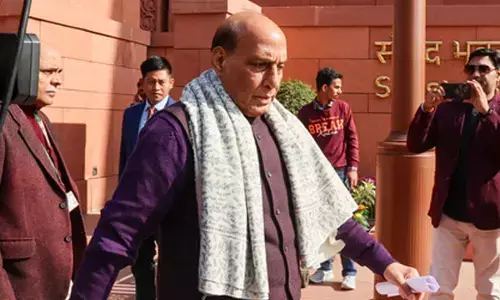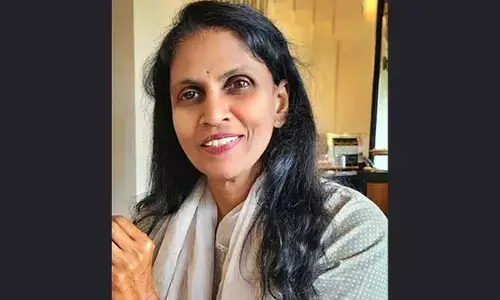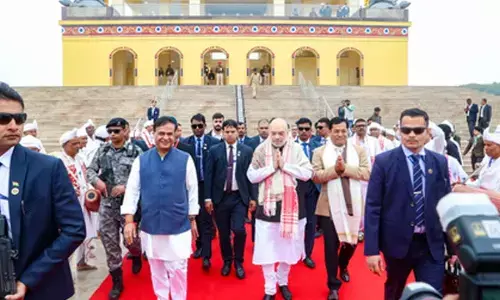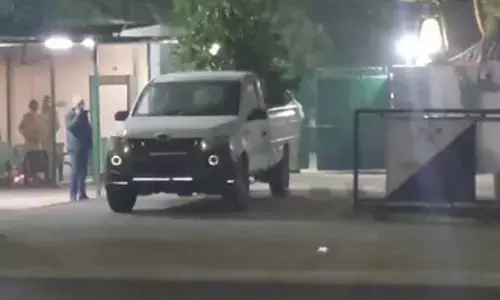Living donor liver transplant much safer now

The future of liver transplantation in India should move toward a more accountable, equitable, and accessible form This is solely attributed to the awareness among Indian citizens who have shown tremendous faith in voluntarily donating their liver as living donors as well as consenting for deceased donation Indias liver transplant programme might be flourishing but is marred by lack of any mech
The future of liver transplantation in India should move toward a more accountable, equitable, and accessible form. This is solely attributed to the awareness among Indian citizens who have shown tremendous faith in voluntarily donating their liver as living donors as well as consenting for deceased donation. India's liver transplant programme might be flourishing but is marred by lack of any mechanism for a registry or mandatory reporting of results too.
What is living liver donation?
When a part of the liver is donated by someone who is living to someone awaiting a liver transplant, it is referred to as living donor liver transplant – “Donor” is the person who gives their liver, and ‟Transplant candidate” or ‟Recipient” is the person waiting for a liver transplant.
A living donor liver transplant process involves transplanting a portion of the liver from a living donor into a recipient whose liver no longer functions properly. The remaining liver in the donor’s body regenerates within couple of months and returns to its normal volume and capacity after surgery. Even the transplanted liver portion grows and restores its normal functioning in the recipient.
According to the statistics published in several journals, over 15% of the patients undergoing live donor liver transplant are from abroad. With growing awareness and the rising burden of liver ailments over 85% of them are live donors. This has also attracted foreign patients, namely, from the Middle East, Pakistan, Sri Lanka, Bangladesh and Myanmar to India for liver transplant. Over 200 cases undergo transplant annually, which shows the rapid progression of LDLT (living donor liver transplant) in India. And over 2500 living donor transplants have been conducted until now.
LDLT transparent in India
Transplanting liver from a live donor is a very transparent activity in India. It is a well-organised process with the recommendations and clearance required from the specialists concerned. Donations done apart from the first-degree relations needs to get clearance from the state-appointed authorization committee. If a foreign patient needs to donate or get a transplant done, the necessary approval from the embassies concerned along with the state clearance certificate is a mandate. The donor risk is discussed and the success of the recipient operation is also explained to all patients.
How to be a living liver donor?
Liver donation has become very safe, with a surgery performed to remove a part of liver from the donor used for transplant. Within a time span of 2-3 weeks the donor recovers completely well as the liver regenerates itself. There are certain criteria for becoming a live donor, which includes: The donor should be within the age limit of 18-55 years and willing, to eliminate any risk of fatty liver the person donating the liver should not be more than 85 kgs or the respective BMI (<25); and the donor should either possess the same blood group as of the recipient or universal donor ‘O’.
The donor is then thoroughly checked for complete screening tests like - CBC, PT, LFTs, Serum creatinine, HBsAg, HCV antibody, HIV I,II, Chest X ray, ECG and Ultrasound of the abdomen.
Growing need for LDLT in India
After 2 unsuccessful attempts in 1995 and 1996, the first successful deceased donor liver transplant (DDLT) was performed in 1998. However, due to the sporadic availability of deceased donor organs, a patient requiring liver transplant would almost certainly die before an organ could become available. Liver transplantation remained a realistic option only for the few who could afford the astronomical costs of travelling overseas for the procedure.
In India where historical and cultural issues have impeded the ready availability of cadaveric organs for donation, at least currently, LDLT is the only realistic option. Some of the inherent hurdles in DDLT include timely availability of a deceased donor organ before the patient becomes too sick to receive a transplant, organ harvesting and transport, likelihood of marginal grafts due to paucity of expertise in management of brain dead donors and difficulty for the recipient to arrive at the transplant centre at short notice. It is no wonder therefore, that more than 70% of the liver transplants performed in this country till date have been LDLTs.
Scope and feasibility in India
Before assessing its feasibility in India, it is pertinent to define the pre-requisites for establishing an LDLT programme. Obviously the procedure is very resource intensive and requires skilled multidisciplinary manpower. It is, however, not imperative that the Centre has experience in performing DDLT though such experience can be beneficial.
At least two surgeons with significant experience in advanced hepatobiliary surgery and assistant surgeons are required per surgical team. The surgical team has to be actively supported by a group of highly skilled and experienced anesthetists, critical care physicians and transplant hepatologists with a round-the-clock access to diagnostic and interventional radiology, dialysis, and endoscopy, immunology, pathology, transfusion, microbiology and biochemistry services of the highest quality.
At least two state-of-the-art operating rooms equipped with rapid infusers, cell savers, non-invasive cardiac output monitors, ultrasonic surgical aspirator, argon coagulator and on-site laboratory are necessary. In the post-operative period, a modern intensive care facility with invasive monitoring, laminar flow and skilled nursing staff form the remaining links in the chain.
LDLT has become a necessary supplement to DDLT in India. It is also required to promote public acceptance of liver transplantation. It might even help in promoting deceased donor organ donation. However, it is necessary to adopt an extremely cautious attitude so as to prevent unregulated proliferation of LDLT centres.
Strict adherence to and fostering of internationally accepted norms of training and set-up as well as internal and external auditing of results must be made compulsory before permitting centres to carry out LDLT. In particular, the living donor must be protected under all circumstances if continuing clinical benefits are to be reaped from LDLT.
By: Dr Ravinder Pal Singh Malhotra
(Writer is Director & HOD, Center for Liver Healthy Human Clinics, Delhi)
Woman injured in stabbing attack in Tokyo, suspect at large
Bengal cop booked for murder over mysterious death of woman home guard, SIT to probe case
Staffer recalls horror of 7-kg gold robbery by armed gang in Karnataka’s Hunsur
25-Year-Old Airline Cabin Crew Member Dies At Gurugram Party; Police Begin Investigation
















